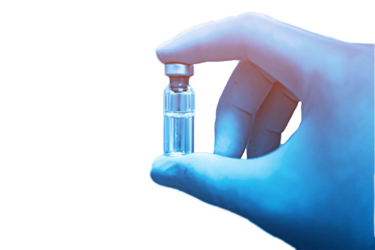What Can The Tech Sector's 'Minimally Viable' Concept Teach Biopharma?
By Kelly Cycon, Ph.D., BioSci Consulting

While the concept of “minimally viable” has long been associated with technology startups seeking rapid market validation as part of the term minimum viable product (MVP), the phrase has become a mantra for survival in the current climate of tight budgets and grant cancellations. This article explores how the minimally viable approach can be implemented by life science and biopharmaceutical companies, providing a framework for efficient product development that balances timelines, costs, and compliance at a critical time when science itself is in jeopardy.
At its core, minimally viable means creating something with just enough features or functionality to serve an essential purpose, satisfy early adopters, and gather feedback without spending unnecessary time, money, or resources building a full final, advanced version.
Another way to look at it is to discern what is minimal versus essential for a specific product or service, because that’s where most teams overbuild. Deciding what is good enough to get started can support the mindset of building something minimally viable without sacrificing quality, functionality, or safety.
Many teams mistakenly associate minimally viable with "launch a half-broken thing quickly." However, that’s a dangerous misread of the concept. Minimally viable still means it works as intended, just in a basic manner. It delivers a core promise and is good enough for use, but the version lacks bells and whistles, the enjoyable features that add cost.
Key Principles of ‘Minimally Viable’:
- Focus on core values.
- Strip the idea down to the one thing it must do to solve a real problem.
- Avoid extras or “nice-to-have” features at the start.
- Test early, learn quickly.
- Launch before it’s perfect so you can test the concept in real-world conditions.
- Learn what works and what doesn’t as fast as possible.
- Reduce risks.
- By investing in only the minimal version, you limit the cost if the idea fails.
- Avoid spending time on fancy features not actually needed.
- Iterate improvement.
- The first version is just the starting point.
- You refine the product through cycles of user feedback → redesign → relaunch.
Implementing The Minimally Viable Concept In Biopharma
The biopharmaceutical industry is challenged by long development cycles, high costs, and significant attrition rates. For example, the average drug takes 10 to 15 years to reach the market, and clinical success rates are below 10%.1 Diagnostics and medical devices face similarly lengthy and expensive pathways to clearance under regulatory agencies such as the FDA2, 3 and EMA.4
Therapeutics must adhere to stringent regulatory requirements, ensure patient safety, and deliver scientifically valid outcomes. You can’t just throw a basic version of a drug or device into the field and see how it performs like an iPhone operating system update. Instead, your market feedback must balance regulatory compliance, efficacy, patient safety, data integrity, scientific validity, and market feasibility from regulators, clinicians, and trial data. That means the “minimal” part is about reducing time and cost while still meeting the strict scientific and regulatory standards needed for testing, safety, validation, and approval.
For new medical devices and diagnostics, an MVP could be a functional prototype designed to generate data for feasibility or analytical performance studies. It may not be fully automated, but it should be designed to demonstrate proof of concept to investors, associates, and regulators. Even a minimal diagnostic product must be tested in a controlled environment and often under research-use-only (RUO) labeling until clearance can be achieved through the FDA.
For therapeutics and drug development, minimally viable usually means the smallest, fastest path to de-risking the product candidate, often through preclinical proof-of-concept in vitro and in vivo studies. An example could be screening just enough top-performing compounds to get a candidate with a plausible safety and efficacy profile while designing minimal preclinical studies to justify an IND submission.
For research tools and reagents, minimally viable can be more literal, such as launching a RUO kit with just the core reagents or offering limited format sizes to accelerate time-to-market and validate demand. An example of this could be small-batch lyophilized molecular controls sold to early adopter labs to evaluate market performance before building a fully automated PCR control manufacturing line.
Lastly, for clinical trials, a minimally viable trial design is often the smallest number of participants that can statistically power your primary endpoint, with adaptive trial designs to allow mid-study modifications. This approach limits cost while still producing valid regulatory-grade evidence.
In this environment, adopting a minimally viable approach offers a pathway to conserve resources while advancing innovation responsibly. Unlike consumer software and technology, where MVPs may be imperfect but functional, life sciences MVPs must prove to be scientifically valid, compliant, and safe but can still be strategically limited in scope to accelerate development and validate purpose.
Principles Of Minimally Viable In Life Sciences
- Scientific rigor is nonnegotiable.
Products must generate reproducible data, withstand peer or regulatory scrutiny, and be designed with patient and user safety in mind. - Achieve compliance at every stage.
Even minimal products must align with the regulatory framework of their development stage, whether under RUO labeling, GLP, or GMP. - Focus on milestone-driven progression.
The goal is not a finished product, but the least resource-intensive version that answers the critical scientific or regulatory question needed to progress to the next milestone. - Perform iterative expansion post-validation.
Broader indications, optimized manufacturing, and expanded claims should follow initial proof of feasibility or regulatory clearance.
Minimally Viable As A Scientific Business Strategy
A minimally viable strategy is about doing just enough to showcase a company’s value proposition, generate revenue, and attract customers without overspending on infrastructure. This approach is especially relevant to science-based ventures, where R&D, regulations, and specialized equipment can be major barriers to success.
Core principles include starting with services, consulting, or small-scale projects before investing heavily in labs, equipment, or full-time staff. Strategic partnerships with universities, CROs, and local organizations can provide access to facilities, equipment, and expertise that would otherwise be costly to own.
Clear communication of this philosophy across the team is essential for efficiency. For example, deciding when to formalize processes by writing SOPs versus recording results in notebooks directly affects both compliance and labor costs. Similarly, the timing of purchasing materials or implementing a quality management system should align with actual business needs rather than assumptions.
In practice, this means replacing the “build it, and they will come” mindset with “build it when a customer is ready to pay for it.” Supporting tactics include engaging fractional staff (e.g., contract scientists or regulatory experts) and leveraging nondilutive funding sources like SBIR/STTR grants.
By adopting a minimally viable strategy, scientific businesses can stay lean, focused, and better positioned to scale when true market demand is validated.
A Cultural Shift For Biopharma
Historically, biopharma companies have leaned toward maximum build by running extensive studies, polishing prototypes, and locking down manufacturing before testing the market or regulatory waters. This approach feels safer, but it consumes years of effort before learning whether the core idea is viable. Adopting a minimally viable mindset doesn’t mean lowering standards. It means asking at every stage:
- What is the smallest experiment we can run to answer this question?
- What data do we need to unlock the next regulatory or commercial milestone?
- What can wait until after we’ve proven core feasibility and safety?
This can be implemented as a basic business strategy, where employees are trained to focus their time on organizational and developmental processes that are critical to functionality and success, while putting added systems or improvements on the back burner until the company is more financially stable.
Conclusion
The minimally viable approach is never about cutting corners; it is about strategic focus and discipline. For life sciences and biopharma, this mindset requires balancing rigor with efficiency by advancing only what is essential to demonstrate product feasibility, safety, and compliance at each stage. It’s the art of moving forward with the least waste of time, money, and opportunity while still honoring the precision the field demands.
By adopting a minimally viable framework, organizations can reduce costs, create faster pathways to innovation, accelerate learning cycles, and increase the likelihood that high-value innovations reach the market where they can advance scientific progress and improve patient outcomes.
The MVP Road Map
1. Discovery & Early R&D
- Minimally Viable Output: Proof of concept (PoC) that demonstrates biological feasibility.
- Requirements: Demonstration of core biological feasibility.
- Approach: Focus on experiments that validate the mechanism of action or assay functionality. Delay broad optimization and high-throughput screening.
- Examples: A prototype assay showing detection of the target, a small molecule with in vitro efficacy, or a protein expressed in a relevant system.
2. Preclinical Development
- Minimally Viable Output: Prototype supported by key safety/efficacy data.
- Requirements: Small-scale toxicology, stability, and pilot validation studies aligned with GLP.
- Approach: Utilize RUO-labeled prototypes to test market and partner interest while collecting preclinical data. Run the leanest possible preclinical studies that satisfy regulators and de-risk the program. Defer full toxicology or broad validation until there’s a viable candidate.
- Examples: Pilot animal studies that confirm mechanism of action, limited stability data on a diagnostic reagent, RUO-labeled kits for market testing.
3. Regulatory Submission & Early Clinical
- Minimally Viable Output: Submission package meeting the minimal regulatory standard for clearance (e.g., IND, IDE, 510(k)).
- Requirements: Clinical trial protocols or validation studies that are statistically powered but tightly scoped.
- Approach: Pursue modular or adaptive submissions (e.g., FDA Breakthrough Device designation or limited intended-use claims) before expanding to broader indications. Define the narrowest regulatory path to approval. Get clearance for a focused indication, then expand claims post-market.
- Examples: IND-enabling studies for a therapeutic, 510(k) data package for a diagnostic with a narrow intended use.
4. Commercial Launch
- Minimally Viable Output: First GMP commercial-ready version that is safe, compliant, and meets core user needs.
- Requirements: Regulatory labeling compliance, validated manufacturing processes, and sufficient QC.
- Approach: Deploy controlled launches with early adopters, gather post-market surveillance data, and scale incrementally. Launch small, gather real-world performance and market feedback, and scale after validation.
- Examples: GMP-manufactured lots in limited formats, compliant labeling, early-access program with key reference labs or clinicians.
References:
- Biotechnology Innovation Organization (BIO). Clinical Development Success Rates and Contributing Factors. 2021.
- U.S. Food and Drug Administration. 21 CFR Part 809: In Vitro Diagnostic Products for Human Use.
- U.S. Food and Drug Administration. 21 CFR Part 820: Quality System Regulation.
- European Medicines Agency. Guidelines on Good Clinical Practice (ICH E6 R2).
About The Author:
 Kelly A. Cycon, Ph.D., is an independent consultant and principal of BioSci Consulting. Previously, she was a vice president at iFyber, and before that, virology director at ZeptoMetrix. She received a Ph.D. in immunology from the University at Buffalo. Connect with her on LinkedIn.
Kelly A. Cycon, Ph.D., is an independent consultant and principal of BioSci Consulting. Previously, she was a vice president at iFyber, and before that, virology director at ZeptoMetrix. She received a Ph.D. in immunology from the University at Buffalo. Connect with her on LinkedIn.
